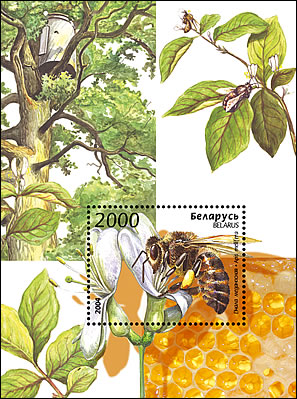Pesticides are an important potential cause of biodiversity and pollinator decline. Little is known about the impacts of pesticides on wild pollinators in the field. Insect pollinators were sampled in an agricultural system in Italy with the aim of detecting the impacts of pesticide use.
The insecticide fenitrothion was over 150 times greater in toxicity than other pesticides used in the area, so sampling was set up around its application. Species richness of wild bees, bumblebees and butterflies were sampled at three spatial scales to assess responses to pesticide application: (i) the ‘field’ scale along pesticide drift gradients; (ii) the ‘landscape’ scale sampling in different crops within the area and (iii) the ‘regional’ scale comparing two river basins with contrasting agricultural intensity. At the field scale, the interaction between the application regime of the insecticide and the point in the season was important for species richness. Wild bee species richness appeared to be unaffected by one insecticide application, but declined after two and three applications. At the landscape scale, the species richness of wild bees declined in vine fields where the insecticide was applied, but did not decline in maize or uncultivated fields. At the regional scale, lower bumblebee and butterfly species richness was found in the more intensively farmed basin with higher pesticide loads. Our results suggest that wild bees are an insect pollinator group at particular risk from pesticide use.
Source:
C.A. Brittain, M. Vighi, R. Bommarco, J. Settele and S.G. Potts (2010)
Impacts of a pesticide on pollinator species richness at different spatial scales
Basic and Applied Ecology
Volume 11, Issue 2, March 2010, Pages 106-115
http://www.sciencedirect.com/science/article/pii/S1439179109001418
The environmental properties of the insecticide fenitrothion are as follows: non-persistent in soil, low leachability, aqueous hydrolysis DT50 at 20 degrees C and pH 7: 183 days, acute 48 hour LD50 for honeybees (µg bee-1): 0.16.
For comparison, the environmental properties of the insecticide imidacloprid are as follows: persistent in soil, high leachability, aqueous hydrolysis DT50 at 20 degrees C and pH 7: stable, acute 48 hour LD50 for honeybees (µg bee-1): 0.0037.
Source: IUPAC FOOTPRINT Pesticide Properties Database:
http://sitem.herts.ac.uk/aeru/iupac/299.htm

- Login om te reageren
